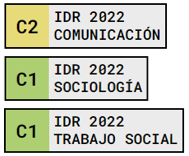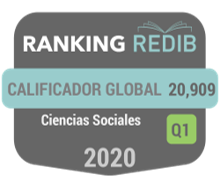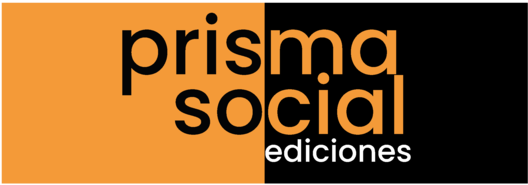Articles on drugs in the Spanish press: How much information and what topics make the news?
Palabras clave:
Drugs, Medications, Newspapers, Press, Science communication, Journalism, Content analysisResumen
News about drugs is important for health professionals, businesses, and the general public. However, studies examining news articles about drugs are lacking. This paper uses content analysis to examine articles about drugs in 17 Spanish newspapers (13 general, two business, and two professional) from 2008 through 2017. On average, general and business newspapers published three articles about drugs every week, and professional newspapers published 14 every week. Overall, the number of articles about drugs decreased by 10%. The most covered drug-related topics in 2017 were cancer and generics; the least covered was preclinical research. Four times more articles were published on clinical than on preclinical research. Business newspapers published more about clinical and preclinical research than other types of newspapers. Articles about drugs accounted for 0.5% (n=838/178,926) of all articles in the general newspapers, 0.8% (n=468/55,800) in the business newspapers, 8.5% (n=415/4,856) in the medical newspapers, and 1.2% (n=19/1,645) in the science news agency SINC. This study used a new strategy to search and identify newspaper articles through content analysis of large volumes of information and offered relevant data to guide future research.
Descargas
Citas
Agulló Calatayud, V., Castelló i Cogollos, R. & Valderrama Zurián, J. C. (2014). Beyond elite sports: Analysis of the coverage of anabolic steroids in the Spanish press (2007–2011). Catalan Journal of Communication and Cultural Studies, 6(2), 197-220
Bartlett, C., Sterne, J., Egger, M. (2002). What is newsworthy? Longitudinal study of the reporting of medical research in two British newspapers. British Medical Journal, 325(7355), 81-84. https://doi.org/10.1136/bmj.325.7355.81
Barry C.L., Martin, A. & Busch, S. H. (2012). ADHD medication use following FDA risk warnings. J Ment Health Policy Econ 15(3), 119-125.
Bosch, F. & Serés, E. (2015). From scientific advances to public health action: The crucial role of science dissemination. J Epidemiol Community Health, 69(1), 1-2. https://doi.org/10.1136/jech-2014-203851
Bosch, F., Escalas, C., Forteza, A., Serés, E. & Casino, G. (2018). Lista de comprobación para mejorar la información sobre fármacos en la prensa: la importancia de informar sobre las fases y la incertidumbre de la investigación. Rev Esp Comun Salud, 9(2), 203-14. https://doi.org/10.1136/jech-2014-203851
Boutron, I., Haneef, R., Yavchitz, A., Baron, G., Novack, J., Oransky, I., Schwitzer. G. & Ravaud, P. (2019). Three randomized controlled trials evaluating the impact of "spin" in health news stories reporting studies of pharmacologic treatments on patients'/caregivers' interpretation of treatment benefit [published correction appears in BMC Med. 2019 Jul 27;17(1):147]. BMC Med, 17(1), 105. https://doi.org/10.1186/s12916-019-1330-9
Carvajal García-Pando, A., González Martínez, T. & Manso Martínez, E. (1987). Información sobre fármacos en la prensa diaria. Med Clin (Barc), 90(15), 607-610.
Casino, G. (2003). La información de salud en los diarios de información general. In: Catalán, J.M. & López Iglesias, J. (Eds.) ¡Infórmate en salud! Ediciones Eneida.
Casino, G. (2007). Los medicamentos en los medios de comunicación. Evaluación crítica de la situación actual. In: Baños, J. E. & Bigorra, J. (Eds.) La proyección social del medicamento, Monografía, no. 33, pp. 67-74. Fundación Dr. Antonio Esteve. https://tinyurl.com/y3v6bsq7
Casino, G., Serés, E. & Bosh, F. (2018). Information about drugs in the Spanish press (2007-2016): a quantitative content analysis [poster]. 18th World Congress of Basic and Clinical Pharmacology, Kyoto, Japan, July, 1-6, 2018. https://www.micenavi.jp/wcp2018/search/detail_program/id:1463
Cassels, A., Hughes, M. A., Cole, C., Mintzes, B., Lexchin, J., & McCormack, J. P. (2003). Drugs in the news: an analysis of Canadian newspaper coverage of new prescription drugs. CMAJ, 168(9), 1133-1137. https://www.ncbi.nlm.nih.gov/pmc/
Catalan-Matamoros, D. & Peñafiel-Saiz, C. (2017). The use of traditional media for public communication about medicines: a systematic review of characteristics and outcomes. Health Commun, 34(4), 415-423. https://doi.org/10.1080/10410236.2017.1405485
Catalan-Matamoros, D. & Peñafiel-Saiz, C. (2019a). How is communication of vaccines in traditional media: a systematic review. Perspect Public Health, 139(1), 34-43. https://doi.org/10.1177/1757913918780142
Catalan-Matamoros, D. & Peñafiel-Saiz, C. (2019b). A visual content analysis of vaccine coverage in the print media. Hum Vaccin Immunother, 15(10), 2453-2459. https://doi.org/10.1080/21645515.2019.1589289
Chen, X. & Siu, Ll. (2001). Impact of the media and the internet on oncology: survey of cancer patients and oncologists in Canada. J Clin Oncol, 19(23), 4291-4297. https://doi.org/10.1200/JCO.2001.19.23.429
Chisnell, J., Marshall, T., Hyde, C., Zhelev, Z. & Fleming LE. (2017). A content analysis of the representation of statins in the British newsprint media. BMJ Open, 7(8), e012613. http://doi.org/10.1136/bmjopen-2016-012613
Domínguez, M., Sapiña, L. (2019). From sweeteners to cell phones-Cancer myths and beliefs among journalism undergraduates. Eur J Cancer Care (Engl), 29(1), e13180. https://doi.org/10.1111/ecc.13180.
Duggan, L., McCarthy, S., Curtis, L. M., Wolf, M. S., Noone, C., Higgins, J. R., O'Shea, S. & Sahm, L. J. (2014). Associations between health literacy and beliefs about medicines in an Irish obstetric population. J Health Commun, 19, Suppl. 2, 106-114. https://doi.org/10.1080/10810730.2014.936570
Dumas-Mallet, E., Tajika, A., Smith, A., Boraud, T., Furukawa, T. A., Gonon, F. (2019). Do newspapers preferentially cover biomedical studies involving national scientists? Public Understanding of Science, 28(2), 191-200. https://doi.org/10.1177/0963662518809804
Federman, A. D., Wolf, M., Sofianou, A., Wilson, E. A. H., Martynenko, M., Halm, E. A., Leventhal, H. & Wisnivesky, J. P. (2013). The association of health literacy with illness and medication beliefs among older adults with asthma. Patient Educ Couns, 92(2), 273-278. https://doi.org/10.1016/j.pec.2013.02.013
Fralick, M., Ray, M., Fung, C., Booth, C. M., Mallick, R. & Clemons, M. J. (2013). Bevacizumab for advanced breast cancer: hope, hype, and hundreds of headlines. Oncologist, 18(11), 1174-1179. https://doi.org/10.1634/theoncologist.2013-0160
Gabe, J., Williams, S. J. & Coveney, C. M. (2017). Prescription hypnotics in the news: A study of UK audiences. Soc Sci Med, 174, 43-52. https://doi.org/10.1016/j.socscimed.2016.11.029
González-García, M., Cantabrana, B., & Hidalgo, A. (2020). Ciencia, medicina y medicamentos en la prensa diaria: estudio del período 2001-2016. Revista de la Fundación Educación Médica, 23(1), 17-24. https://tinyurl.com/yxrnpvbr
Goodfellow N. A., Almomani, B. A., Hawwa, A. F. & McElnay, J. C. (2013). What the newspapers say about medication adherence: a content analysis. BMC Public Health, 13, 909. https://doi.org/10.1186/1471-2458-13-909
Grilli, R., Ramsay, C. & Minozzi S. (2002). Mass media interventions: effects on health services utilisation. Cochrane Database Syst Rev, (1), CD000389. https://doi.org/10.1002/14651858.CD000389
Halvorson, R. T., Stewart, C. C, Thakur, A. & Glantz, S. A. (2018). Scientific quality of health-related articles in specialty cannabis and general newspapers in San Francisco. J Health Commun, 23(12), 993-998. https://doi.org/10.1080/10810730.2018.1534906
Hochman M., Hochman, S., Bor, D. & McCormick, D. (2008). News media coverage of medication research: reporting pharmaceutical company funding and use of generic medication names. JAMA, 300(13), 1544-1550. https://doi.org/10.1001/jama.300.13.1544
Hunter, P. (2016). The communications gap between scientists and public: More scientists and their institutions feel a need to communicate the results and nature of research with the public. EMBO Reports, 17(11), 1513-1515. https://doi.org/10.15252/embr.201643379B
Kale, M. S., Federman, A. D., Krauskopf, K., Wolf, M., O'Conor, R., Martynenko, M., Leventhal, H. & Wisnivesky, J. P. (2015). The association of health literacy with illness and medication beliefs among patients with chronic obstructive pulmonary disease. PLoS One, 10(4), e0123937. https://doi.org/10.1371/journal.pone.0123937
Klotz, R. J., & Ceccoli, S. J. (2005). Media coverage of drug approvals. Social Science Journal, 42(1), 129-134. https://doi.org/10.1016/j.soscij.2004.11.011
Kuriya, B., Schneid, E. C. & Bell, C. M. (2008). Quality of pharmaceutical industry press releases based on original research. PLoS One, 3(7), e2828. https://doi.org/10.1371/journal.pone.0002828
Lete, I., López-Iglesias J., Dueñas A., Rodríguez M., Bermejo R., Coll C., Doval J. L., Dueñas J. L., Martínez-Salmeán J., Parrilla J. J. & Serrano I. (2006). Contraception in the Spanish press: an analysis of the 1997-2002 period. Eur J Contracept Reprod Health Care, 11(2), 112-116. https://doi.org/10.1080/13625180600557522
Lewison, G., Aggarwal, A., Roe, P., Møller, H., Chamberlain, C. & Sullivan, R. (2018). UK newspaper reporting of the NHS cancer drugs fund, 2010 to 2015: a retrospective media analysis. J R Soc Med, 111(10), 366-373. https://doi.org/10.1177/0141076818796802
Martínez-Martínez P. J., Tuells J. & Colmenar-Jarillo G. (2015). La tardía emergencia mediática de la vacuna contra la viruela, cobertura de noticias en prensa española (1999-2004) [The late media emergency of smallpox vaccine, news coverage of Spanish press (1999-2004)]. Rev Esp Quimioter. 28(3), 125-131.
Miyawaki, R., Shibata, A., Ishii, K., Oka, K. (2016). News coverage of cancer in Japanese newspapers: a content analysis. Health Commun, 32(4), 420-426. https://doi.org/10.1080/10410236.2016.1138391
Montagne, M. (2001). Mass media representations as drug information for patients: the Prozac phenomenon. Subst Use Misuse, 36, p. 9-10, 1261- 1274. https://doi.org/10.1081/JA-100106226
Montané, E., Duran, M., Capellà, D. & Figueras, A. (2005). Scientific drug information in newspapers: sensationalism and low quality. The example of therapeutic use of cannabinoids. Eur J Clin Pharmacol, 61(5-6), 475-477. https://doi.org/10.1007/s00228-005-0916-7
Moynihan, R., Bero, L., Ross-Degnan, D., Henry, D., Lee, K., Watkins, J. Mah C., & Soumerai S.B. (2000). Coverage by the news media of the benefits and risks of medications. N Engl J Med, 372(22), 1645-1650. https://doi.org/10.1056/NEJM200006013422206
Pallari, E., Lewison, G., Sullivan, R. (2017). How is chronic non-communicable respiratory conditions research reported in European newspapers? An impact assessment for policy. The Clinical Respiratory Journal, 11(5), 657-665. https://doi.org/10.1111/crj.12685
Partridge B. J., Bell, S. K., Lucke, J. C., Yeates, S. & Hall, W. D. (2011). Smart drugs "as common as coffee": media hype about neuroenhancement. PLoS One, 6(11), e28416. https://doi.org/10.1371/journal.pone.0028416
The Kaiser Family Foundation & Pew Research Center (2008). Health News Coverage in the U.S. Media. https://www.kff.org/other/health-news-coverage-in-the-u-s/
Powe, B.D., Underwood, S., Canales, M. & Finnie, R. (2005). Perceptions about breast cancer among college students: implications for nursing education. J Nurs Educ. 2005;44(6):257-265.
Revuelta G. (2006). Salud y medios de comunicación en España [Health and the media in Spain]. Gac Sanit, 20, Suppl 1, 203-208. https://doi.org/10.1157/13086045
Revuelta, G. & Minelli de Oliveira, J. (2008). La salud y la biomedicina en la prensa diaria. Un análisis de diez años. Periodística 11,55-67. https://doi.org/10.2436/20.3008.02.5
Revuelta, G. (2012). Salud en España durante el período 2000-2009: aproximación a través del análisis de la prensa [Health status in Spain between 2000 and 2009: an approach through the analysis of the press media]. Med Clin (Barc), 138(14), 622-626. https://doi.org/10.1016/j.medcli.2011.03.011
Robinson, A., Coutinho, A., Bryden, A., & McKee, M. (2013). Analysis of health stories in daily newspapers in the UK. Public Health, 127(1), 39-45. https://doi.org/10.1016/j.puhe.2012.10.001
Saeed, S., Khan, J.A., Iqbal, N., Irfan, S., Shafique, A. & Awan, S. (2019). Cancer and how the patients see it; prevalence and perception of risk factors: a cross-sectional survey from a tertiary care centre of Karachi, Pakistan. BMC Public Health, 19(1):360. http://doi.org/10.1186/s12889-019-6667-7
Saitz, R & Schwitzer, G. (2020). Communicating science in the time of a pandemic. JAMA. Published online July 13, 2020. https://doi.org/10.1001/jama.2020.12535
Santos Diez, M. T. & Camacho Markina, I. (2017). El tratamiento del cannabis en la prensa española. Cuadernos.Info, 40, 153-171. https://doi.org/10.7764/cdi.40.980
Schwitzer, G. (2008). How do US journalists cover treatments, tests, products, and procedures? An evaluation of 500 stories. PLoS Med, 5(5), e95. https://doi.org/10.1371/journal.pmed.0050095
Schwitzer, G. (2012). Is all published health care news actually newsworthy? En V. de Semir & G. Revuelta (Eds.), El periodismo biomédico en la era 2.0. Cuadernos Fundación Dr. Antonio Esteve no. 25. pp.19-23. Fundación Dr. Antonio Esteve.
Schwitzer, G. (2015). Trying to drink from a fire hose: too much of the wrong kind of health care news. Trends Pharmacol Sci, 36(10), 623-627. https://doi.org/10.1016/j.tips.2015.08.005
Selvaraj, S., Borkar, D. S. & Prasad, V. (2014). Media coverage of medical journals: do the best articles make the news? PLoS One, 9(1), e85355. https://doi.10.1371/journal.pone.0085355
Sherman, M (2017). The cultural production of a pharmaceutical market: The making of ADHD. International Journal of Communication, 9(1), 2182-2201
Singh, N., Sit, M. T., Chung, D. M., Lopez, A. A., Weerackoon, R. & Yeh, P. J. (2016). How often are antibiotic-resistant bacteria said to "evolve" in the news? PLoS One, 11(3), e0150396. http://doi.org/10.1371/journal.pone.0150396
Song, H., Omori, K., Kim, J., Tenzek, K. E., Hawkins, J. M., Lin, W., Kim, Y. C. & Jung, J. Y. (2016). Trusting social media as a source of health information: Online surveys comparing the United States, Korea, and Hong Kong. J Med Internet Res, 18(3), e25. https://doi.org/10.2196/jmir.4193
Vallano Ferraza, A., Llop Riusa, R., Bosch Ferrera, M. & Danés Carrerasa, I. (2005). Noticias sobre medicamentos en los suplementos de salud de la prensa Española. Med Clin (Barc), 124(19), 754-755. https://doi.org/10.1157/13075448
Wilson, A., Bonevski, B., Jones, A. & Henry, D. (2009). Media reporting of health interventions: signs of improvement, but major problems persist. PLoS One, 4(3), e4831. https://doi.org/10.1371/journal.pone.0004831
Zhao, F., Chen, Y., Ge, S., Yu, X., Shao, S., Black, M., Wang, Y., Zhang, J., Song, M. & Wang, W. (2014). A quantitative analysis of the mass media coverage of genomics medicine in China: a call for science journalism in the developing world. OMICS, 18(4), 222-230. http://doi.org/10.1089/omi.2013.0108
Descargas
Publicado
Cómo citar
Número
Sección
Licencia
Los autores/as que publiquen en esta revista aceptan las siguientes condiciones:
- Los autores/as conservan los derechos de autor.
- Los autores/as ceden a la revista el derecho de la primera publicación. La revista también posee los derechos de edición.
- Todos los contenidos publicados se regulan mediante una Licencia Atribución/Reconocimiento-SinDerivados 4.0 Internacional. Acceda a la versión informativa y texto legal de la licencia. En virtud de ello, se permite a terceros utilizar lo publicado siempre que mencionen la autoría del trabajo y a la primera publicación en esta revista. Si transforma el material, no podrá distribuir el trabajo modificado.
- Los autores/as pueden realizar otros acuerdos contractuales independientes y adicionales para la distribución no exclusiva de la versión del artículo publicado en esta revista (p. ej., incluirlo en un repositorio institucional o publicarlo en un libro) siempre que indiquen claramente que el trabajo se publicó por primera vez en esta revista.
- Se permite y recomienda a los autores/as a publicar su trabajo en Internet (por ejemplo en páginas institucionales o personales), una vez publicado en la revista y citando a la misma ya que puede conducir a intercambios productivos y a una mayor y más rápida difusión del trabajo publicado (vea The Effect of Open Access).


















